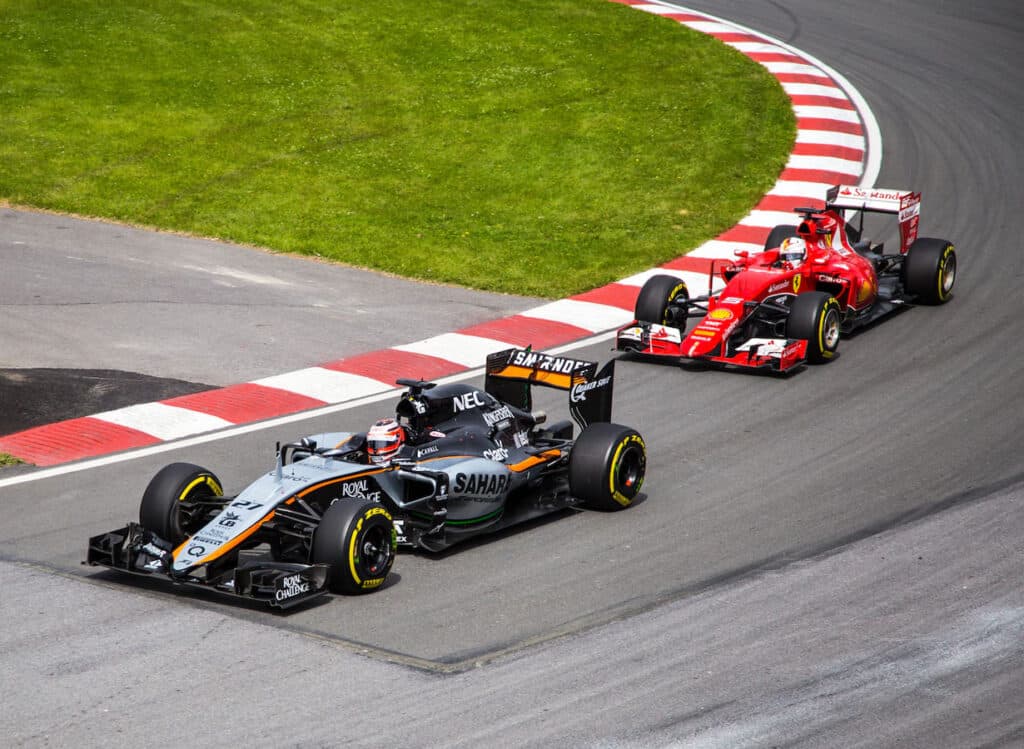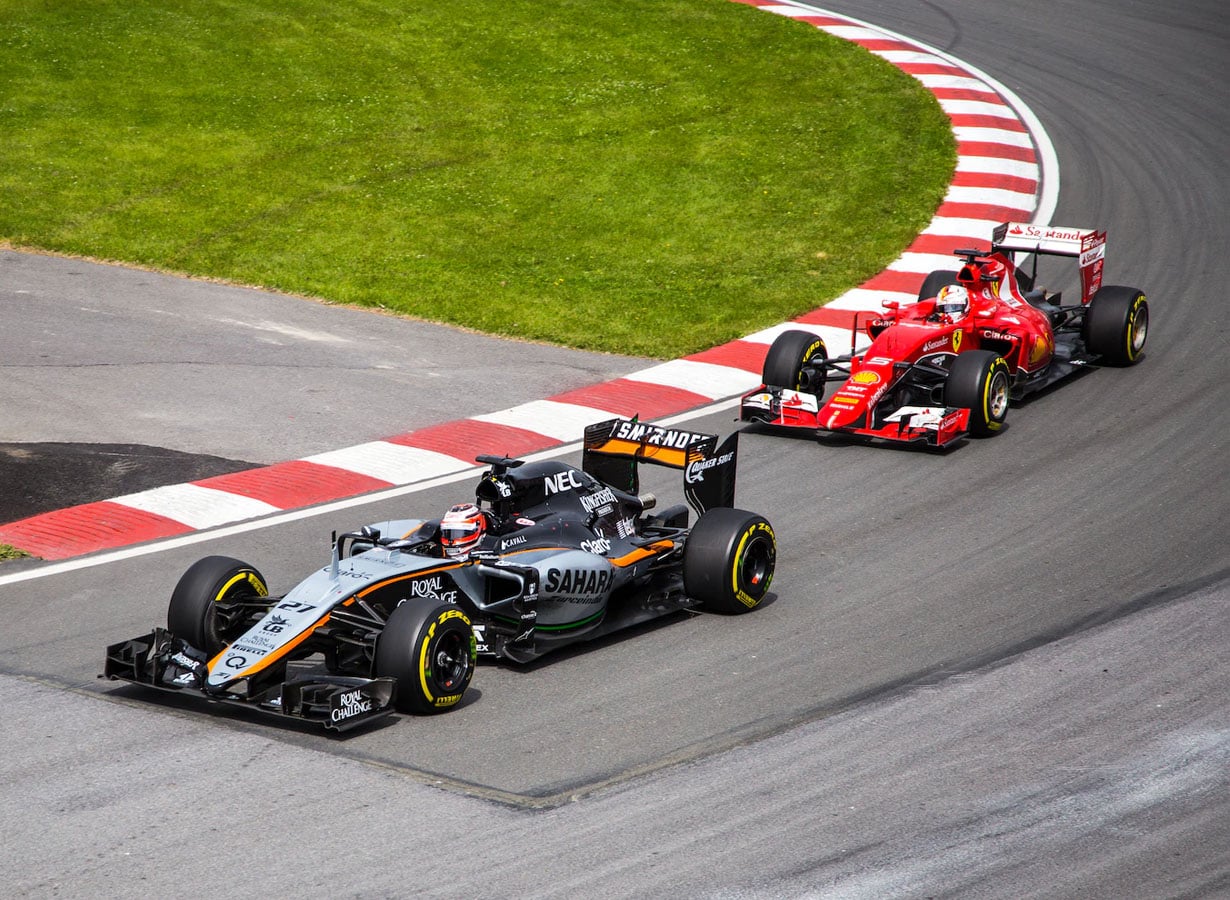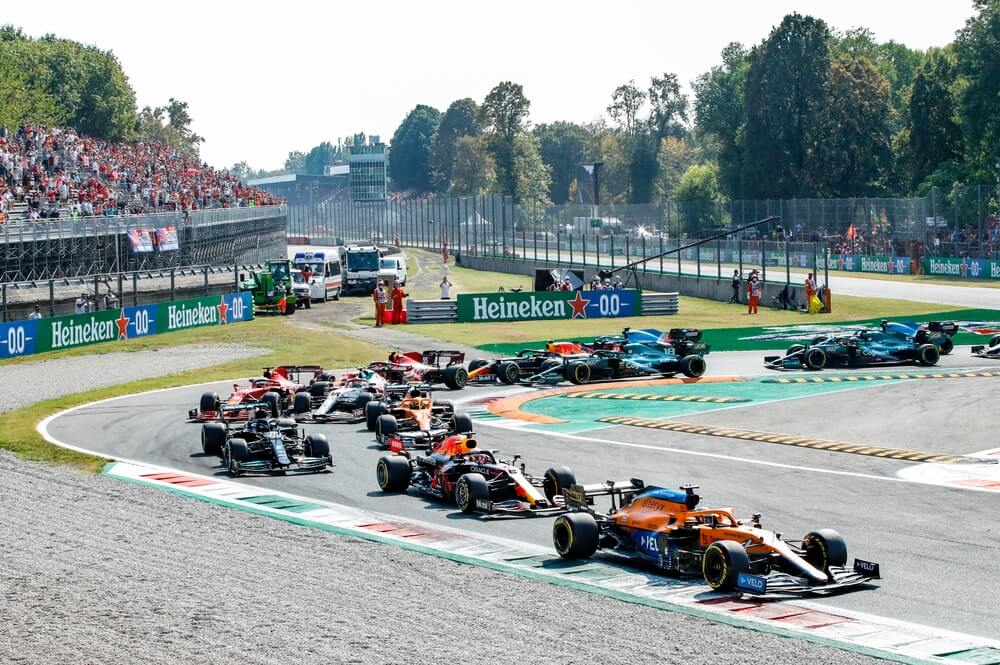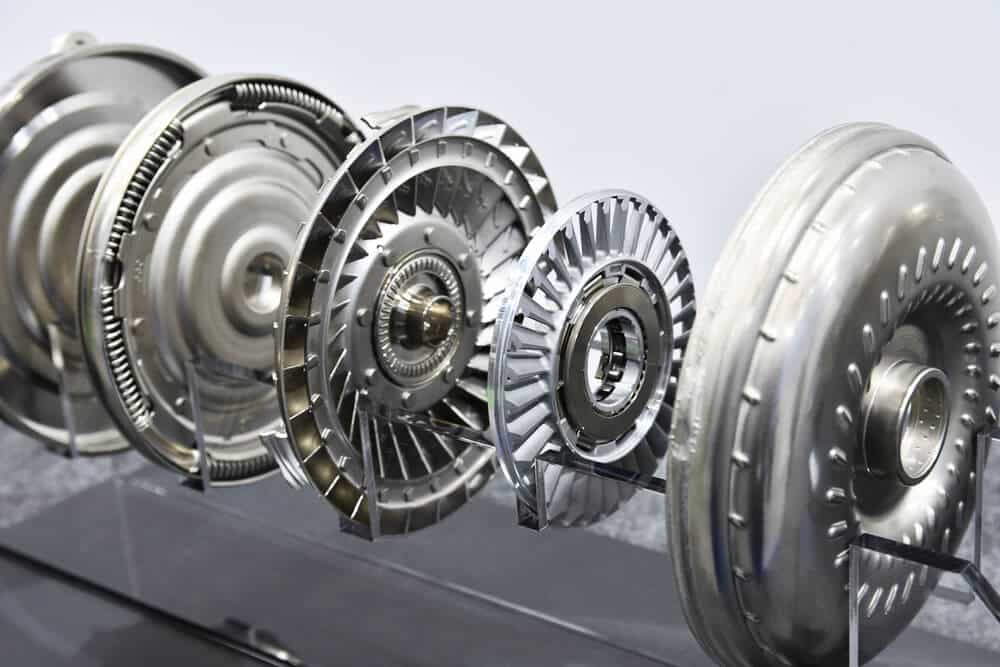Formula 1 is all about speed. The average lap time at the Monaco Grand Prix, for example, is around 95 seconds.
To ensure that the race is fair and safe, there are a number of rules and regulations that all drivers must follow. One of these rules is the blue flag.
The blue flag is used to signal to a driver that they need to let another car pass.
In this article, we will discuss what the blue flag means in Formula 1 and how it can be used to improve the race experience for all drivers involved.
Table of Contents
Watch this video to understand what a blue flag in Formula One means.
What is a blue flag in F1?
A blue flag is a signal that is shown to a driver during a Formula One race. It indicates that they need to allow the car behind them to overtake. The driver must then move out of the way and allow the faster car to overtake.
While the blue flag is often seen as an inconvenience to drivers, it is actually a very important part of the race. The blue flag helps to keep the race fair and safe by ensuring that all drivers are able to compete on an even playing field.
Without the blue flag, some drivers would be at a disadvantage as they would be stuck behind slower cars. By signaling to a driver that they need to allow another car to pass, the blue flag helps to prevent accidents and ensure that everyone has a chance to compete. This is especially important in races where lap times are tight and there is little room for error.
Key takeaways
Here are key takeaways:
- The blue flag is used to signal to a driver that they need to let another car pass.
- This is usually done when the car behind is faster and is trying to overtake.
- This allows for a fairer and safer race
- The blue flag can be used to improve the overall race experience for all drivers involved
- If driver ignores the blue flag they may be given a penalty

Photo showing a lapped Formula 1 car getting a blue flag.
Understanding blue flag in Formula 1
Now that we have covered the basics of the blue flag, let’s take a more in-depth look at how it works.
Must move for lapped cars
When a car is lapped, the driver must move out of the way for the leader to pass. Once the leader has passed, the lapped car can continue racing. This rule exists to keep the race fair and safe. So, the blue flag is shown to the driver of a lapped car as a reminder that they need to let the leader past.
This rule is in place to keep the race fair and safe for all drivers involved. It also helps to add excitement to the race as it can often create overtaking opportunities that would not otherwise exist.
Penalty after three waved blue flags
If a driver ignores the blue flag for three laps, they may be given a penalty. The penalty depends on the severity of the infraction but can range from a warning to a time penalty or even a disqualification.
For example, Nikita Mazepin was given a penalty point during the 2021 Portuguese Grand Prix. The penalty was given after Mazepin blocked Red Bull’s Sergio Perez through five blue flags. After a short investigation, Mazepin was given a five-second time penalty. This didn’t change his final result, as he was over a minute behind the field at that point.
This rule is in place to ensure that drivers do not ignore the blue flag and continue to race as normal. By penalizing drivers who ignore the blue flag, it helps to keep the race fair and safe for all drivers involved.
Different types of flags in Formula 1
Except for the blue flag, there are several other colors that may be shown during a Formula One race. Here is a quick overview of some of the other flags that you may see:
1. Red flag
The red flag indicates that the race has been stopped due to an accident or other safety concerns. All drivers must stop racing and return to the pit lane.
2. Yellow flag
A yellow flag in F1 is shown when there is a danger on the track. This may be due to an accident, debris, or bad weather. Drivers must slow down and be prepared to stop if necessary when they see a yellow flag.
3. Green flag
The green flag is shown at the start of the race and after any safety car periods. This indicates that the track is clear and that drivers can race at full speed.
4. Checkered flag
The checkered flag in F1 is shown at the end of the race. This indicates that the race is over and that drivers must slow down and proceed back to the pits.
There are other flags that may be shown during a race, but these are the most common. If you ever find yourself watching a Formula One race, pay attention to the flags being shown and see if you can figure out what they mean.
5. Black flag
The black flag in F1 is shown to a driver to indicate that he must stop racing immediately and return to the pit lane. This usually happens when a driver has violated something or his car is not in a safe condition to continue.
Frequently asked questions about blue flag in Formula One
What does a blue flag mean in F1?
What penalty can a driver get if he ignores blue flags?
Conclusion
The blue flag is an important part of Formula One racing. It helps to keep the race fair and safe for all drivers involved. If you ever find yourself watching a Formula One race, pay attention to the flags being shown and see if you can figure out what they mean.




